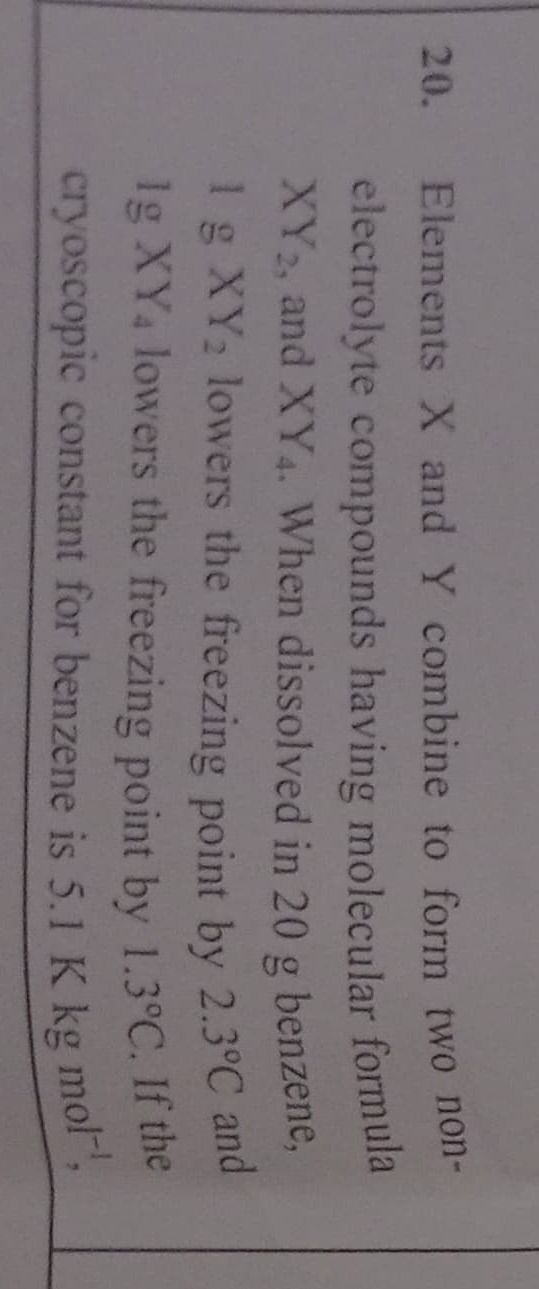Question
Question: Elements X and Y combine to form two non-electrolyte compounds having molecular formula XY₂, and XY₄...
Elements X and Y combine to form two non-electrolyte compounds having molecular formula XY₂, and XY₄. When dissolved in 20 g benzene, 1 g XY₂ lowers the freezing point by 2.3°C and 1g XY₄ lowers the freezing point by 1.3°C. If the cryoscopic constant for benzene is 5.1 K kg mol⁻¹.

x = 25.6,y = 42.6
x = 42.6,y = 25.6
x = 35.89,y = 54.9
x = 54.9,y = 35.89
Atomic mass of X = 25.6, Atomic mass of Y = 42.6
Solution
The problem involves the application of the colligative property of depression in freezing point. The formula relating freezing point depression (ΔTf), molality (m), and cryoscopic constant (Kf) is:
ΔTf=Kf⋅m
Molality (m) is defined as:
m=mass of solvent (kg)moles of solute=mass of solvent (kg)mass of solute / molar mass of solute
Rearranging the formula to find the molar mass (M) of the solute:
M=ΔTf⋅mass of solvent (kg)Kf⋅mass of solute
If the mass of the solvent is given in grams (Wsolvent(g)), the formula becomes:
M=ΔTf⋅Wsolvent(g)Kf⋅mass of solute⋅1000
Given data:
Kf=5.1 K kg mol⁻¹ Mass of solute (both XY₂ and XY₄) = 1 g Mass of benzene (solvent) = 20 g
- Calculate the molar mass of XY₂ (MXY2):
ΔTf=2.3 °C MXY2=2.3 K×20 g5.1 K kg mol⁻¹×1 g×1000 MXY2=465100≈110.87 g/mol
- Calculate the molar mass of XY₄ (MXY4):
ΔTf=1.3 °C MXY4=1.3 K×20 g5.1 K kg mol⁻¹×1 g×1000 MXY4=265100≈196.15 g/mol
- Set up equations for atomic masses:
Let the atomic mass of X be x and the atomic mass of Y be y. For XY₂: x+2y=MXY2≈110.87(Equation 1) For XY₄: x+4y=MXY4≈196.15(Equation 2)
- Solve the system of equations:
Subtract Equation 1 from Equation 2: (x+4y)−(x+2y)=196.15−110.87 2y=85.28 y=285.28 y=42.64
Substitute the value of y into Equation 1: x+2(42.64)=110.87 x+85.28=110.87 x=110.87−85.28 x=25.59
Rounding to one decimal place, the atomic mass of X is approximately 25.6 and the atomic mass of Y is approximately 42.6.
